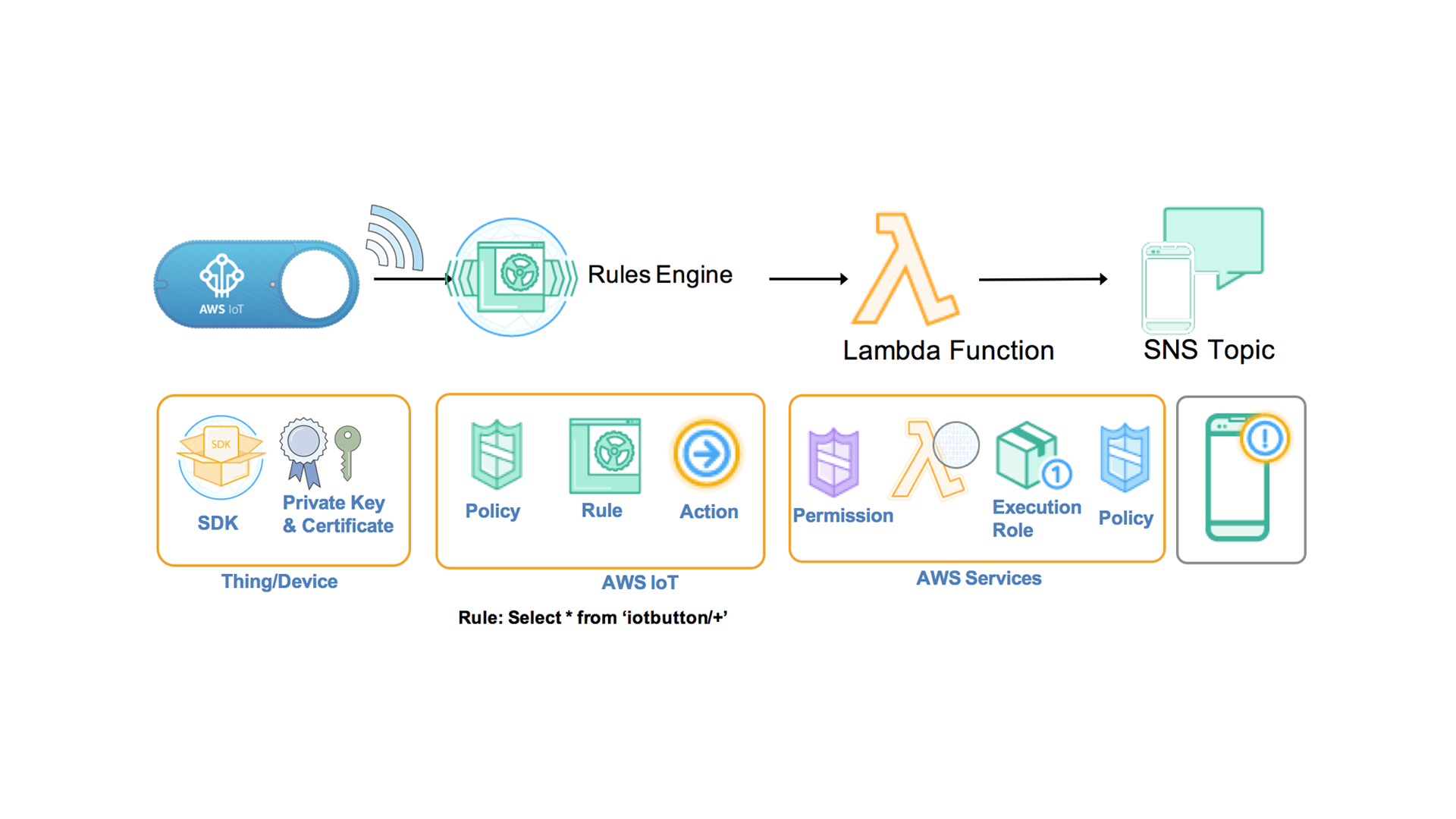The AWS IoT Button is a programmable button based on the Amazon Dash Button hardware. This simple Wi-Fi device is easy to configure and designed for developers to get started with AWS IoT, AWS Lambda, Amazon DynamoDB, Amazon SNS, and many other Amazon Web Services without writing device-specific code.
You can code the button's logic in the cloud to configure button clicks to count or track items, call or alert someone, start or stop something, order services, or even provide feedback. For example, you can click the button to unlock or start a car, open your garage door, call a cab, call your spouse or a customer service representative, track the use of common household chores, medications or products, or remotely control your home appliances.
The button can be used as a remote control for Netflix, a switch for your Philips Hue light bulb, a check-in/check-out device for Airbnb guests, or a way to order your favorite pizza for delivery. You can integrate it with third-party APIs like Twitter, Facebook, Twilio, Slack or even your own company's applications. Connect it to things we haven’t even thought of yet. We can't wait to see what you will build with the AWS IoT Button!
Developing Applications with the IoT Button
Join us for an overview of how to benefit from one click enterprise IoT services.
March 23, 2017 l 9:00 - 10:00 AM PT | Register Here
After you configure the AWS IoT Button to connect to your Wi-Fi network and provision the button with an AWS IoT certificate and private key, the button will securely connect to AWS IoT and publish a message on a topic when clicked. You can use the AWS IoT rules engine to set up a rule and configure single-click, double-click, or long-press events to be routed to any AWS service. You can configure it to send you a notification through Amazon SNS or store the clicks in an Amazon DynamoDB table. You can even code custom logic written in Node.js, Python, or Java in an AWS Lambda function, and then configure the function to connect to third-party services or other AWS IoT-powered connected things.




